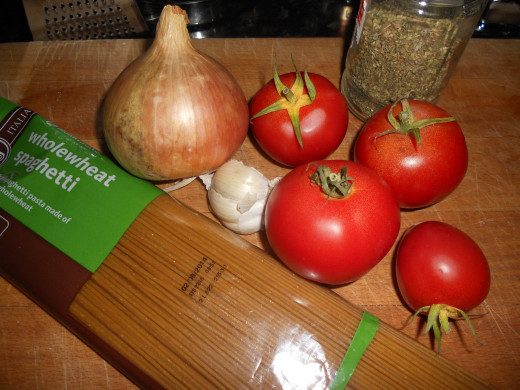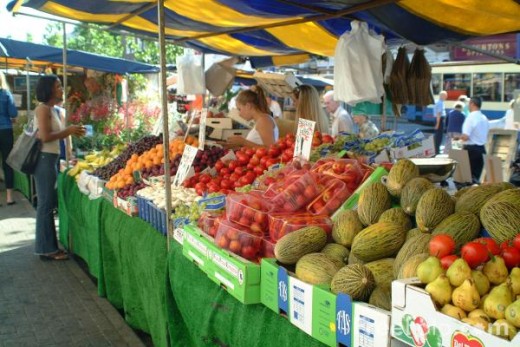A vegetarian's guide to surviving in Italy

As a vegetarian travelling abroad, the first thing that crosses my mind is "Will I be able to survive on a vegetarian diet?" and in foreign speaking countries "How will I communicate that I am a vegetarian?"
On a recent trip to Italy I made it my mission to overcome these obstacles, and to enjoy the country for its culture and its wonderful food. We were self-catering, so could pick up ingredients in the local shops and markets, but as we were on holiday we also planned to eat out in restaurants.
The first thing to do was to learn enough Italian to be able to make it clear that I didn't eat meat or fish, but I didn't want to spend the week eating nothing but lettuce either! The key phrases I needed were:
"Sono vegetariana" (that is the feminine version - it's "vegetariano" for men), meaning simply "I am a vegetarian!" "Vegetariani" is the plural;
and
"Non mangio la carne o i pesci" - I don't eat meat or fish.
That's a start - ruling out what you don't eat. But then you need to find out what you can eat.
Italy is fairly easy in this respect, and I had no trouble finding suitable veggie food anywhere. The dishes in restaurants are often quite simple, various types of pasta with a choice of sauces, many of which are vegetable based, cheeses, eggs, polenta, gnocchi and of course the pizza.
Pasta Neopolitana, or pasta al pomodora is simply pasta with a tomato and basil sauce, and you can get this nearly everywhere.
Pizza will come with toppings of your choice, the Margarita is the basic cheese and tomato pizza, and you can order it topped with funghi (mushrooms), mais (sweetcorn) or peperoni (peppers). Many places even offer a Pizza Vegetariani.
The Italians love their food, and pride themselves on their quality regional ingredients. Local fresh fruit and vegetables are usually found in the street markets, and are always top quality and so much more flavoursome than those sold in supermarkets. A list of common vegetables and vegetarian ingredients that you might find on a menu or in the market is given below.
- arugula - rocket
- caponata - a cold dish of aubergine, pepper, tomato and courgette
- carote - carrots
- ceci - chick peas
- fagiolini - green beans
- formaggio - cheese
- frittata - omelette
- funghi - mushrooms
- Gnocchi - balls of potato, flour and eggs
- insalata verdi - green salad
- lenticchie - lentils
- pane - bread
- polenta - a kind of corn starch that is used in various dishes
- pomodoro - tomatoes
- risi - rice
- salsa - sauce
- spinaci - spinach
- uova - eggs
These are just a few to start off with - and many more types of food will be encountered in Italy. A good phrase book or Italian dictionary will also come in very handy!
It is a good idea to find out what the regional and seasonal specialities are before you go. Italians often celebrate the seasons and their local produce. When I went it was chestnut season - and many of the local villages were having chestnut festivals to celebrate - this involves a kind of street party with fresh roasted chestnuts and as much free local wine as you can drink. They certainly know how to enjoy life and food there!
With a little pre-planning eating abroad on a specialised diet is easier than you think - and I certainly did not go hungry in Italy!





